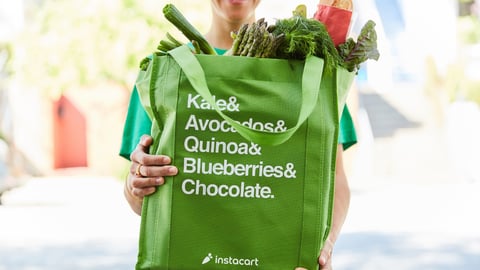Instacart Defends Safety Measures, Changes Tipping Procedure
Faced with surging demand and a wave of negative publicity, Instacart is playing offense and defending its efforts to ensure shopper safety and adjusting app functionality that makes it harder for customers to avoid tipping.
Instacart’s grocery delivery service is used by more than 350 retailers to deliver from more than 25,000 stores. A surge in demand as Americans sheltered in place the past few weeks caused order volume to increase more than 150% and prompted Instacart to announce it was looking for 300,000 shoppers to join its platform.
Amid the growth, the company has faced criticism for some of its policies and a planned "strike" by workers scheduled for March 30 drew widespread media coverage, despite the fact that Instacart’s crowd-sourced labor model means shoppers don't enjoy the collective bargaining leverage of unionized workers.
Nevertheless, by bargaining in the court of public opinion, Instacart was forced to respond to criticism and hastily implement some of the measures desired by shoppers. For example, as order volume grew 150% the past few weeks, average customer basket size also increased by 15% and shopper earnings increased more than 40% month-over-month.
"Over the last month, our team has had an unwavering commitment to prioritize the health and safety of the entire Instacart community,” said Nilam Ganenthiran, president of Instacart. “We've been evaluating the COVID-19 crisis minute-by-minute to provide real-time support for Instacart shoppers and customers throughout North America. We're in close contact with the Centers for Disease Control and other medical experts to ensure our policies, guidelines, and resources are aligned with their recommendations as this situation evolves.”
According to Ganenthiran, within days of the COVID-19 outbreak in the U.S., the company rolled out retroactive sick pay for in-store shoppers nationally and extended pay for all shoppers affected by the virus.
“We were the first company to launch "Leave at My Door Delivery" to give our customers and shoppers a safer, more flexible delivery option. Last week, we announced a new COVID-19 bonus to increase pay as Instacart shoppers step up as household heroes for customers,” Ganenthiran said. “And now, we've sourced, manufactured, and are distributing our own hand sanitizer in an effort to expedite distribution lead times and work around supply chain shortages. Our teams will continue to operate with a sense of urgency on creative solutions to help ensure Instacart shoppers have access to health and safety supplies as quickly as possible."
The company has also changed an important feature of its service designed to increase shoppers tips by removing control from the customer. Based on the positive feedback from shoppers and customers during product tests, Instacart launched a new customer tip default setting for all Instacart customers across North America. The change means all existing customers' completed orders default to the customer's last tip amount, instead of the previous 5% tip default setting.
Instacart is also removing the "none" option in the customer tip settings, requiring customers to manually change their tip to $0 if desired which makes it less likely that a customer will remove the shopper tip altogether. Additionally, if a customer lowers the tip below 5%, the default will reset to 5% to ensure shoppers continue to have a baseline tip amount.
The change is supposedly easier for customers and helps shoppers earn higher tips. Over the last month, 97% of all orders included a tip and shoppers also on average received a 30% increase in earnings from customer tips as a result of the new feature and increased customer demand. Instacart highlighted that 100% of tips go directly to shoppers.
To keep up with demand, Instacart has also announced a huge hiring spree in an attempt to get 300,000 additional full-time shoppers.






